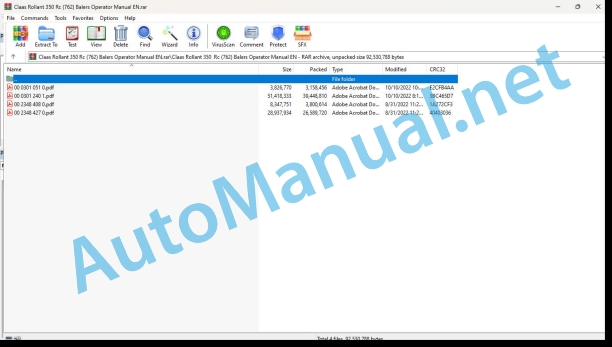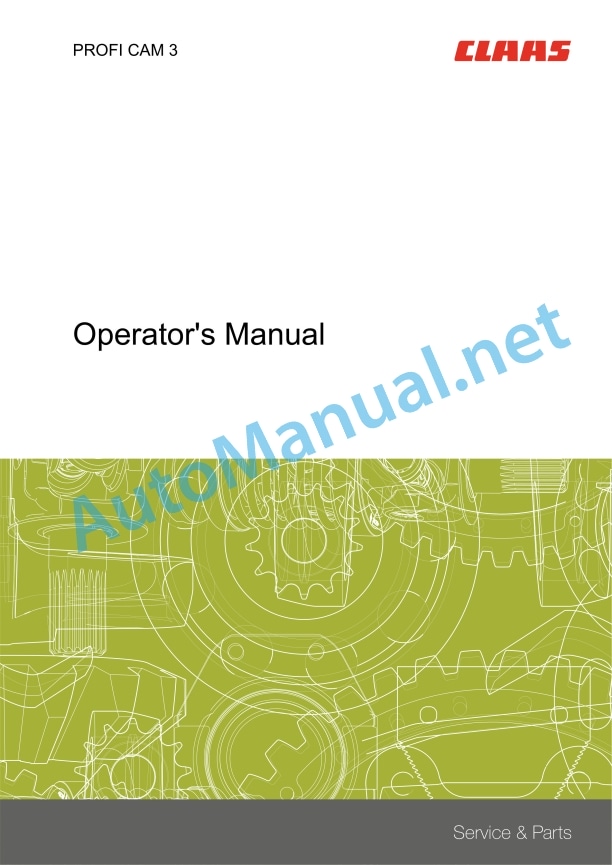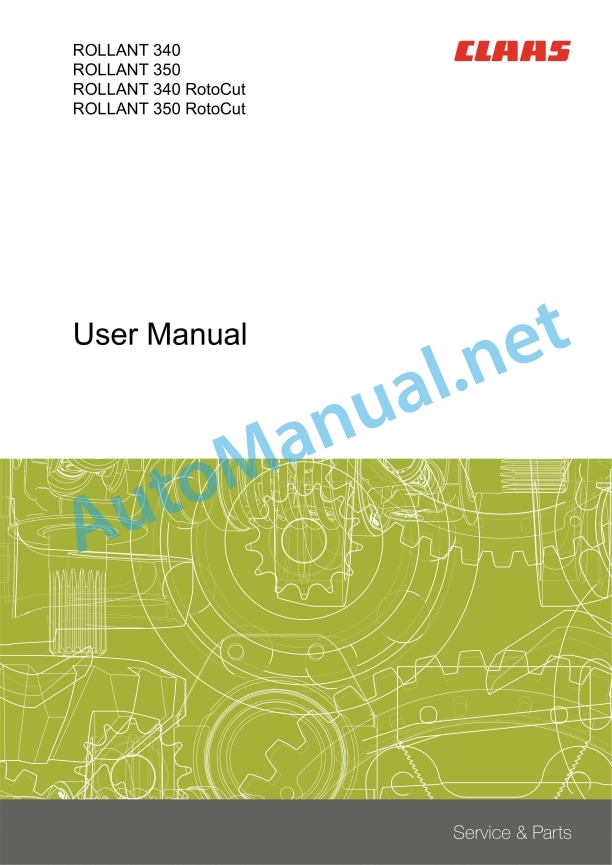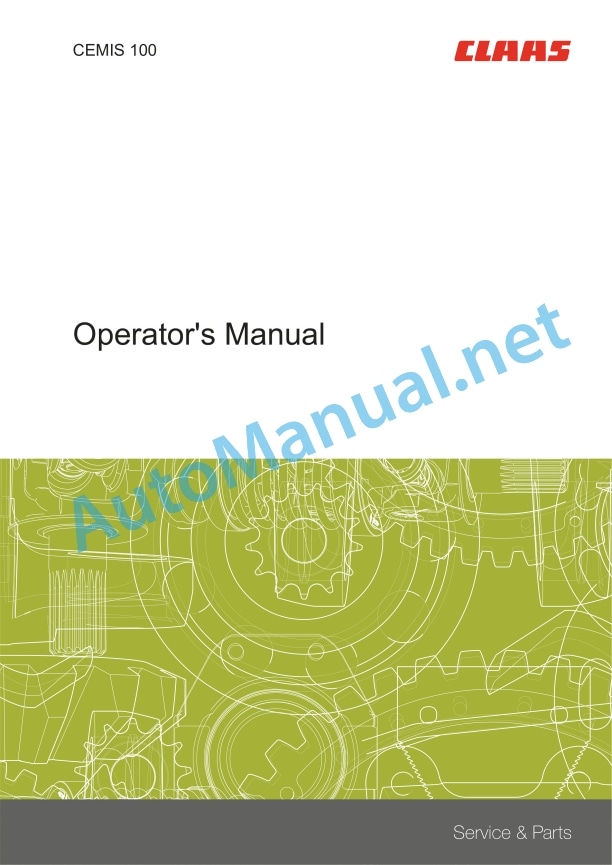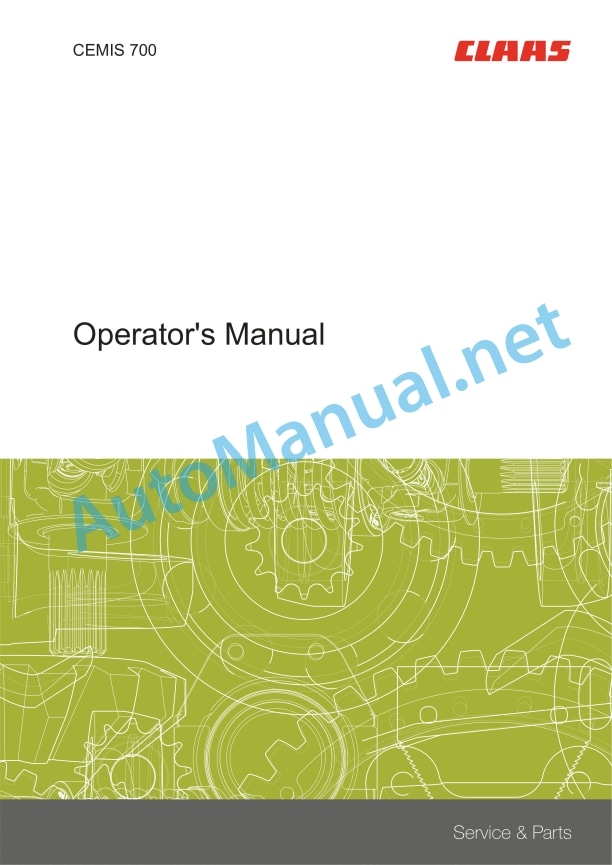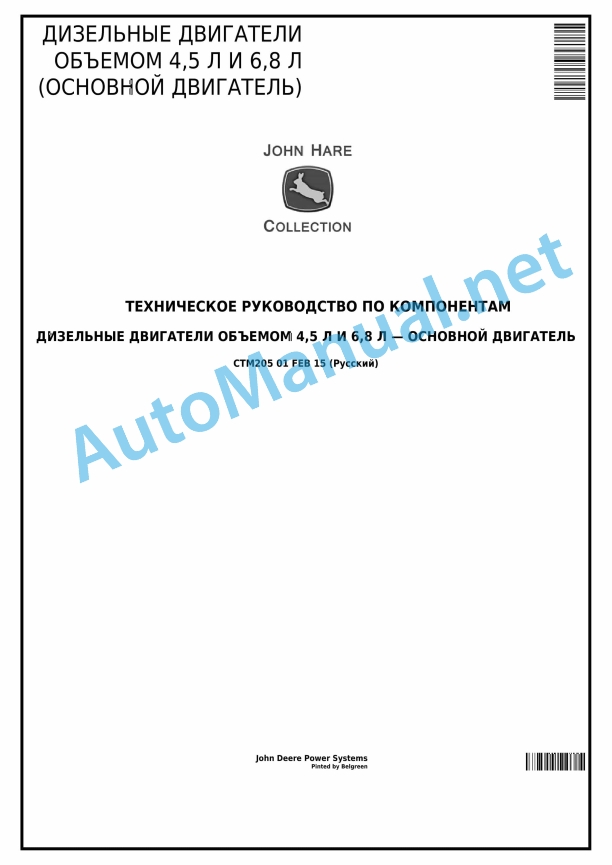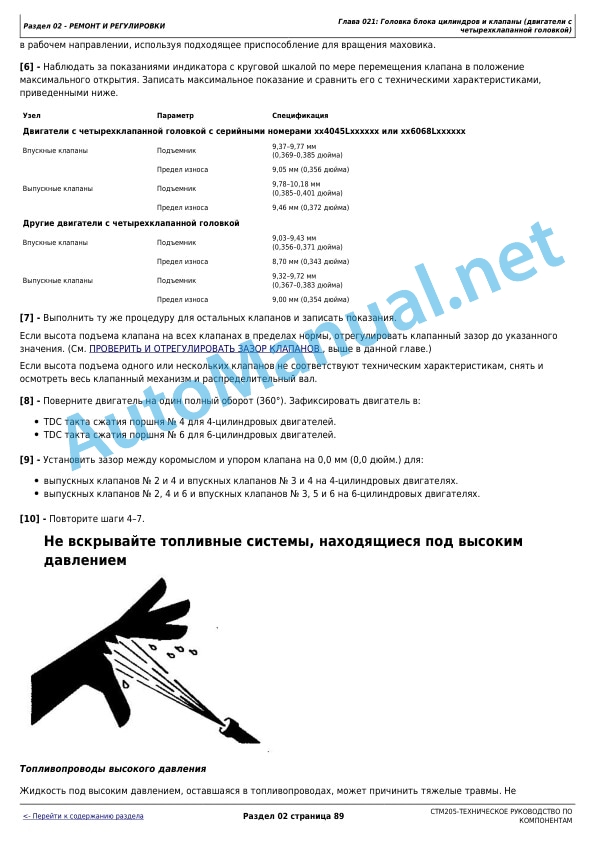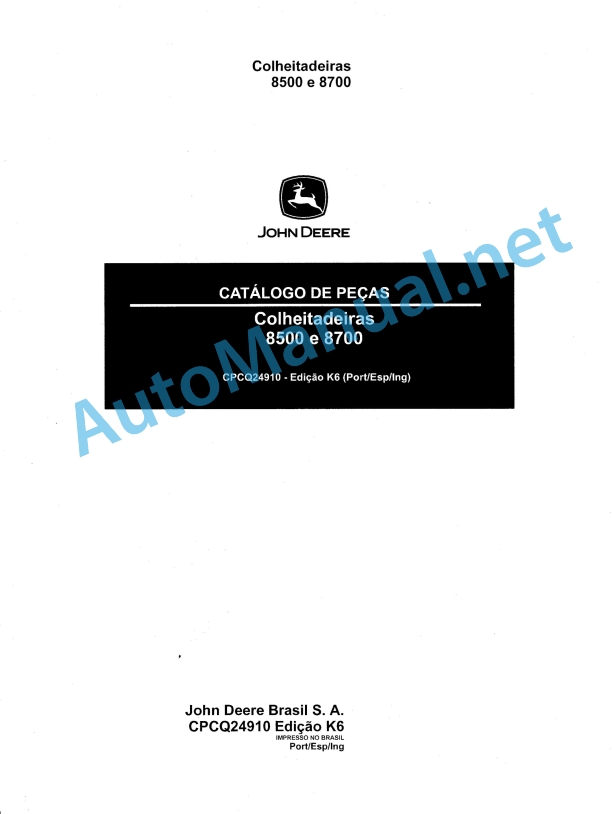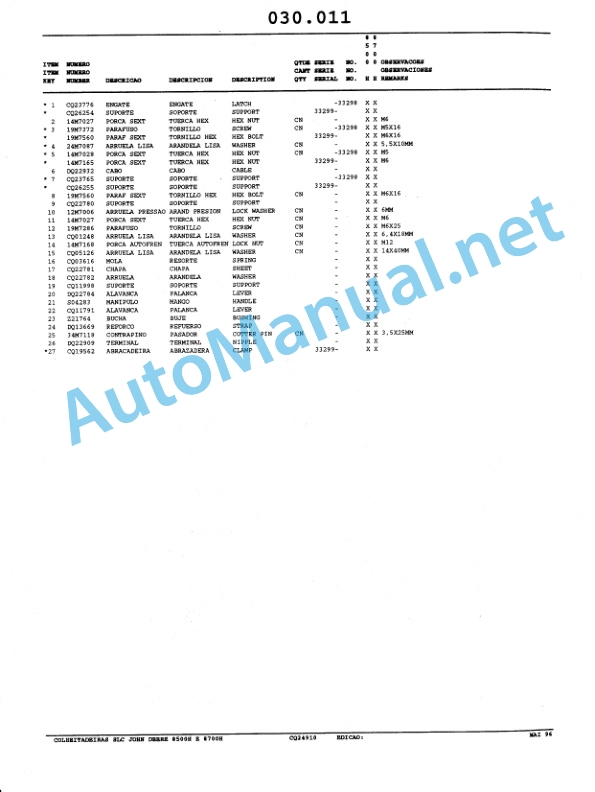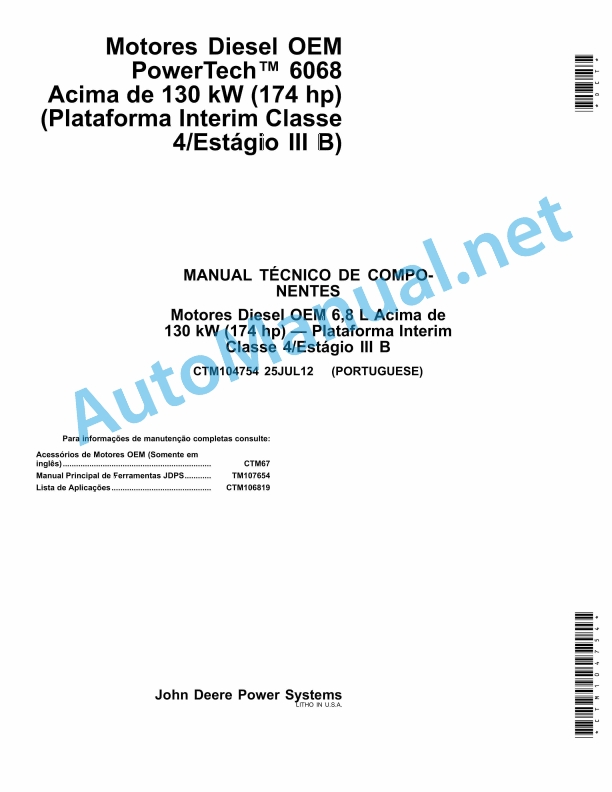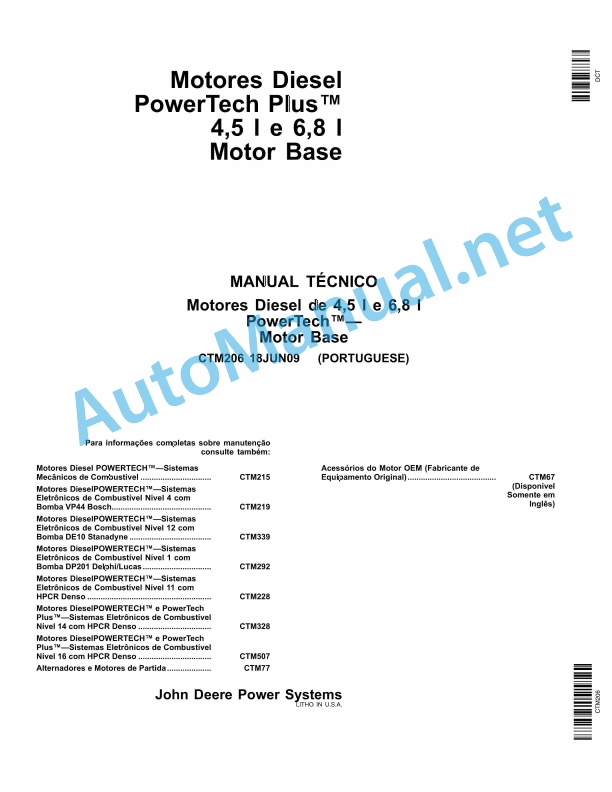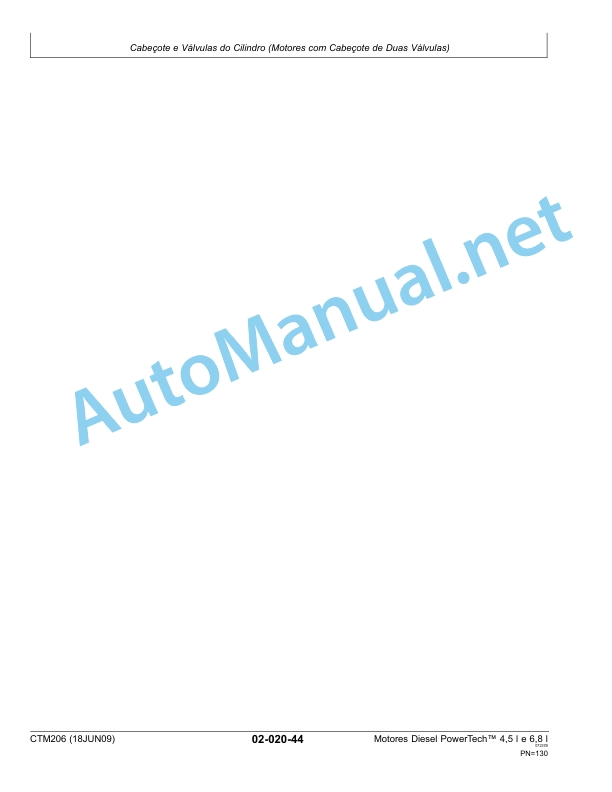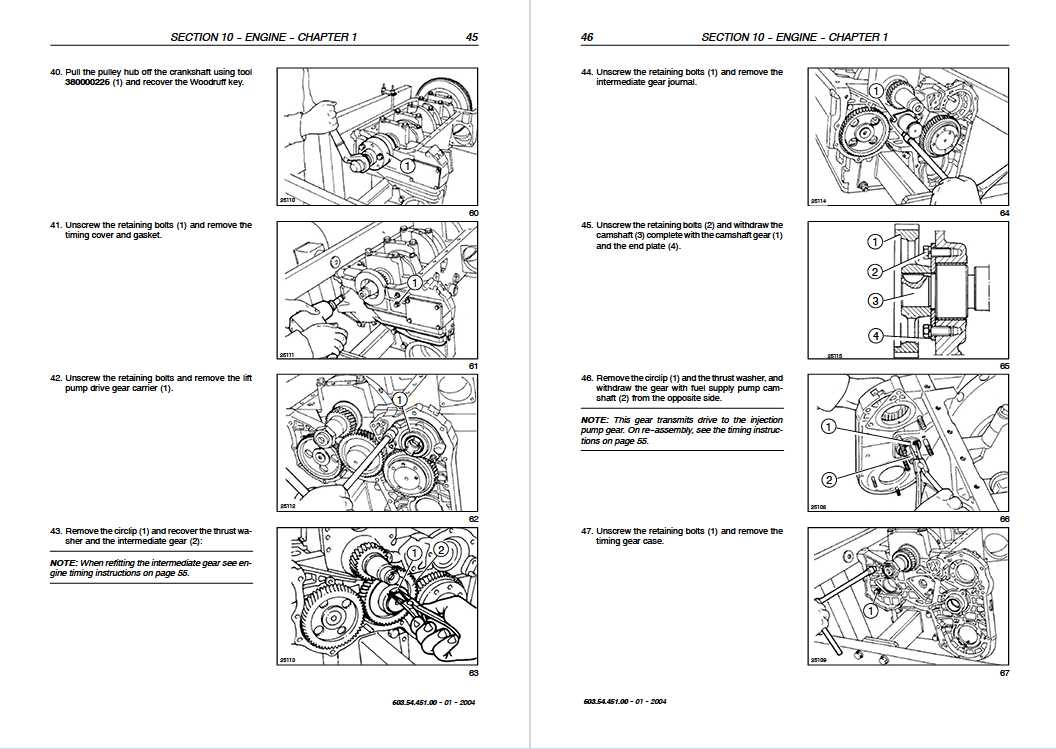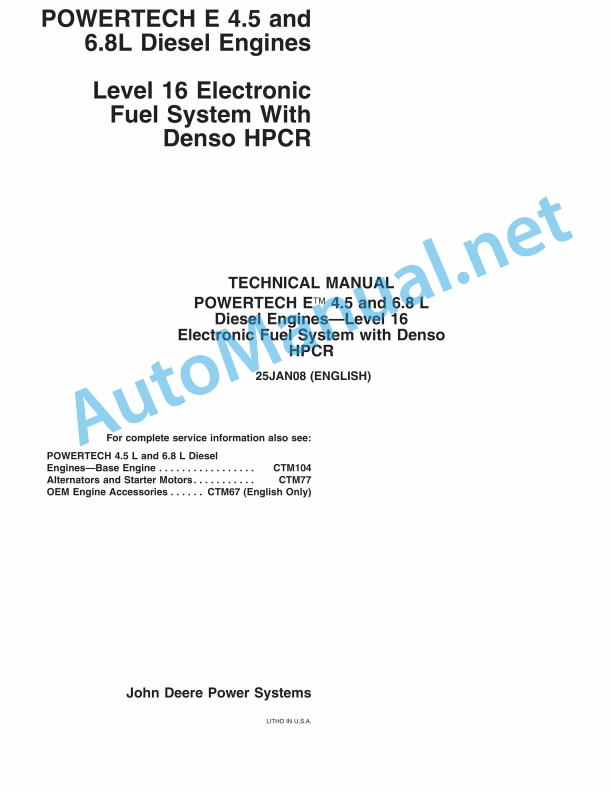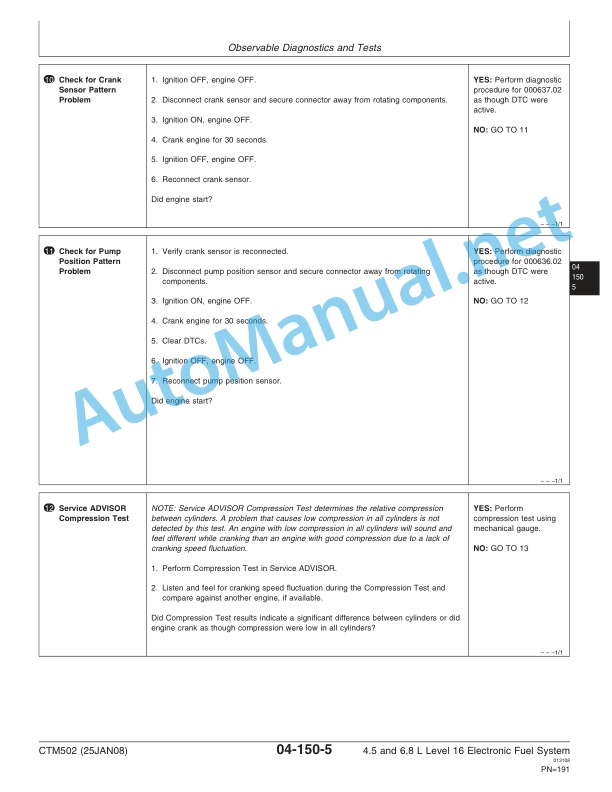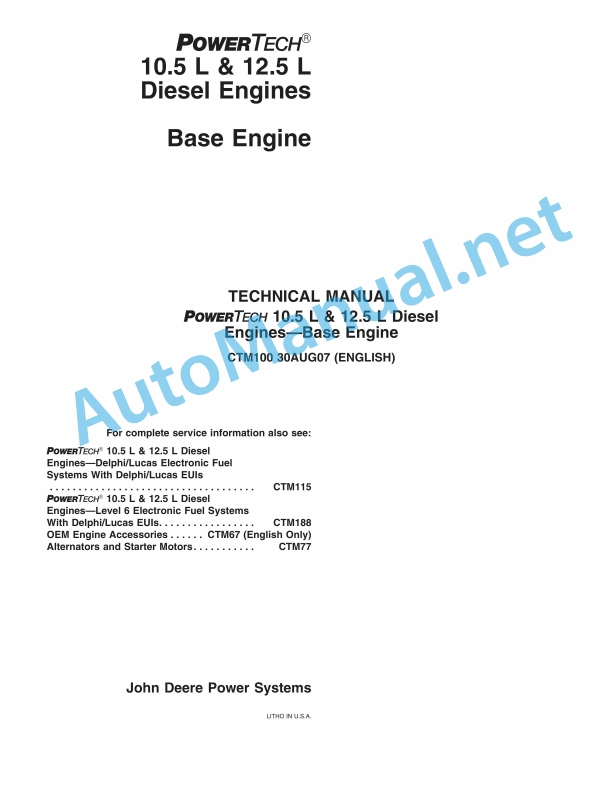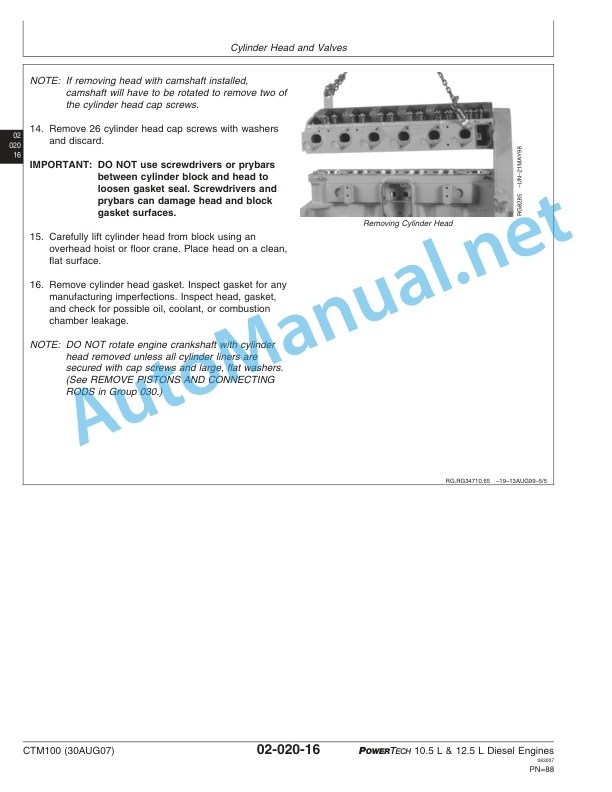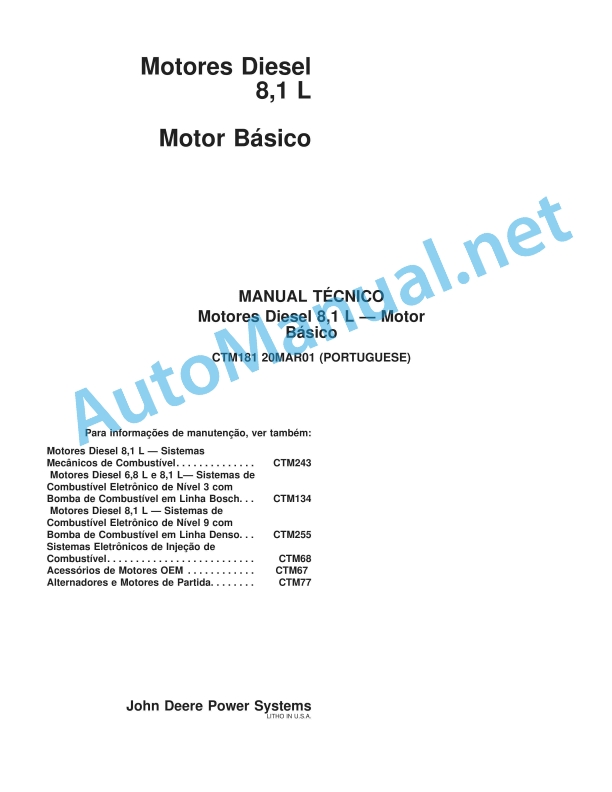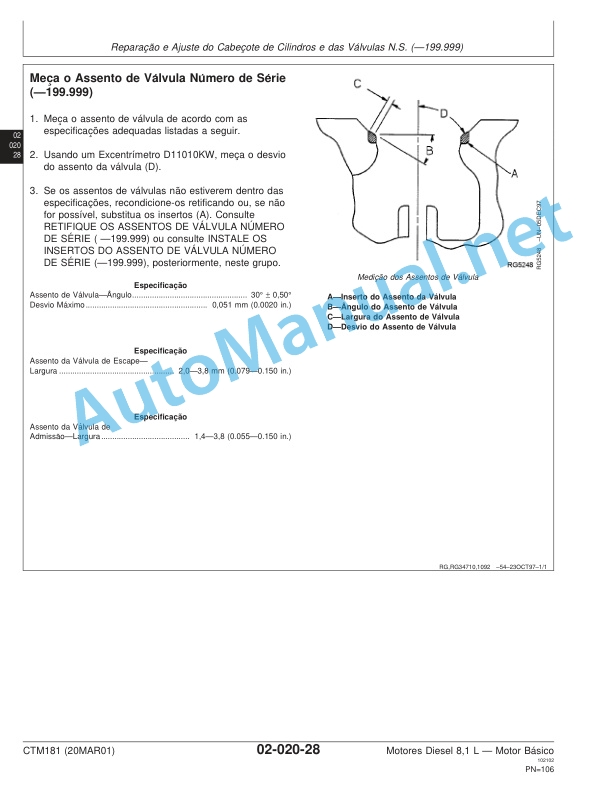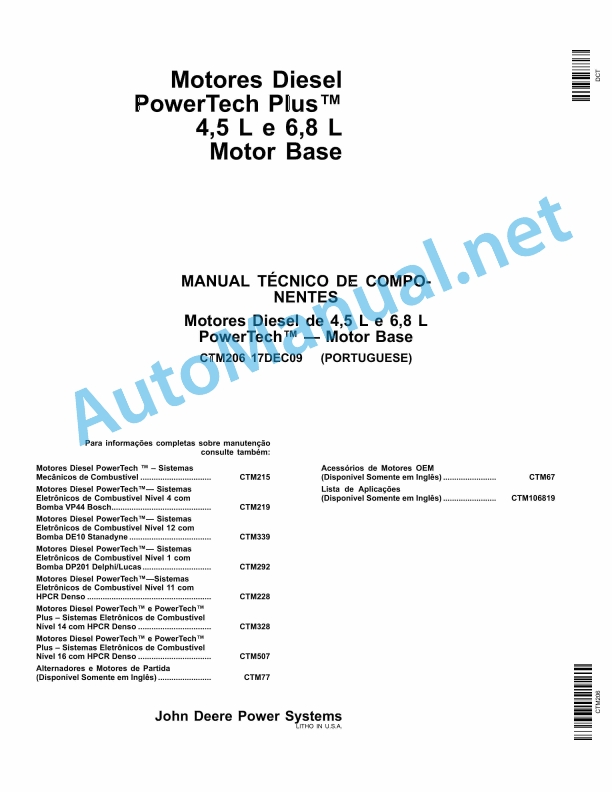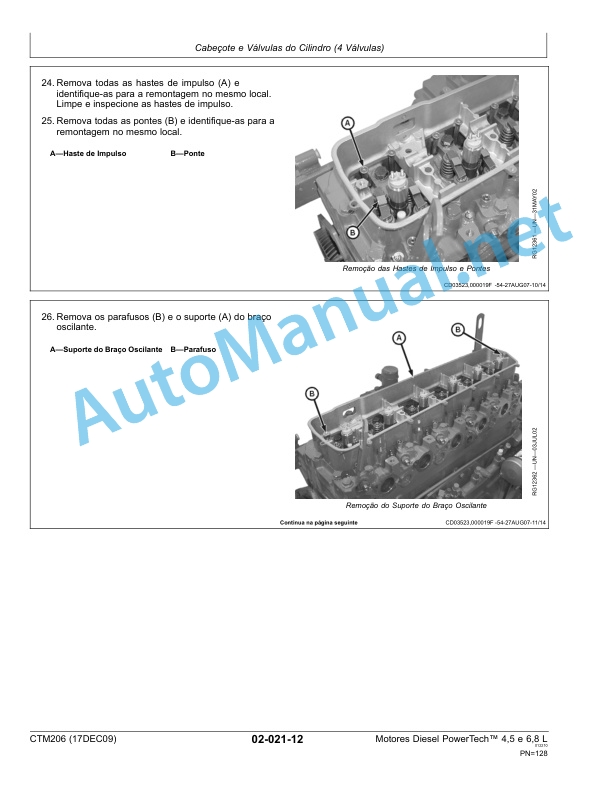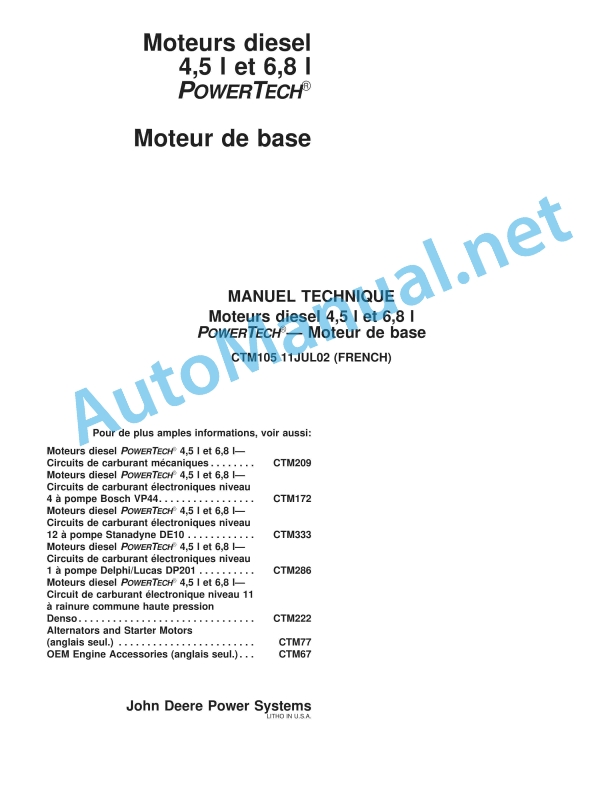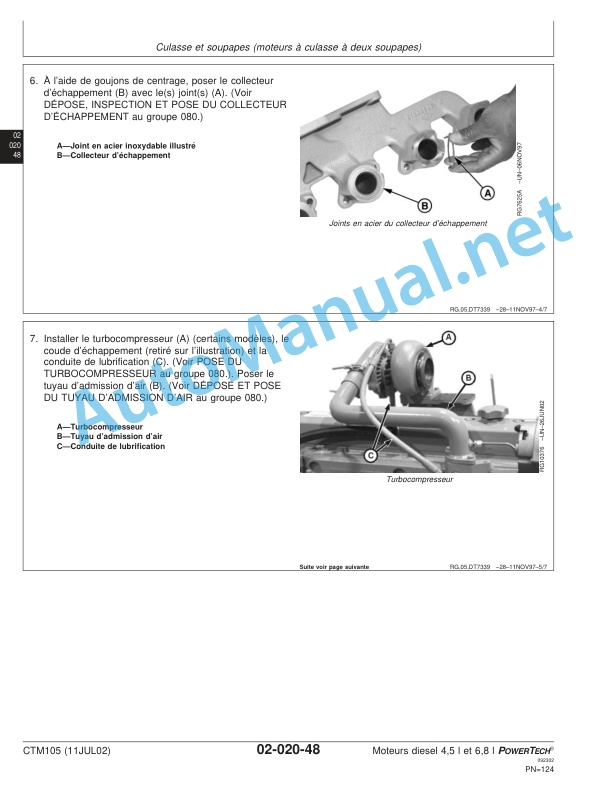Claas Rollant 350 Rc (762) Balers Operator Manual EN
$50.00
- Model: Rollant 350 Rc (762) Balers
- Type Of Manual: Operator Manual
- Language: EN
- Format: PDF(s)
- Size: 69.6 MB
File List:
00 0301 051 0.pdf
00 0301 240 1.pdf
00 2348 408 0.pdf
00 2348 427 0.pdf
00 0301 051 0.pdf:
PROFI CAM 3
Table of contents
1 Introduction
1.1 Notes on the manual
1.1.1 Validity of manual
1.1.2 Information about this Operator’s Manual
1.1.3 Symbols and notes
1.1.4 Optional equipment
1.1.5 Qualified specialist workshop
1.1.6 Maintenance information
1.1.7 Warranty notes
1.1.8 Spare parts and technical questions
1.2 Intended use
1.2.1 Intended use
1.2.2 Reasonably foreseeable misuse
2.1 Identifying warnings
2.1.1 Hazard signs
2.1.2 Signal word
2.2 Safety rules
2.2.1 Meaning of Operator’s Manual
2.2.2 Observing safety decals and warnings
2.2.3 Optional equipment and spare parts
3 Product description
3.1 Overview and method of operation
3.1.1 How the PROFI CAM works
3.2 Identification plates and identification number
3.2.1 Position of identification plates
3.2.2 Explanation of PROFI CAM identification plate
3.3 Information on the product
3.3.1 CE marking
4 Operating and control elements
4.1 Camera system
4.1.1 Camera system monitor
4.2 Menu structure
4.2.1 Main menu
4.2.2
4.2.3
4.2.4
4.2.5
4.2.6
5 Technical specifications
5.1 PROFI CAM
5.1.1 Monitor
5.1.2 Camera
5.1.3 Switch box
5.1.4 Degree of protection against foreign bodies and water
6 Preparing the product
6.1 Shutting down and securing the machine
6.1.1 Switching off and securing the machine
6.2 Prior to operation
6.2.1 Carry out prior to operation
6.2.2 Installing the sun protection
6.2.3 Aligning the camera
6.2.4 Connecting the camera electrics
7 Operation
7.1 Monitor
7.1.1 Switching on the monitor
7.1.2 Calling up the menu
7.1.3 Setting a menu item
7.1.4 Setting the image orientation
7.1.5 Setting automatic screen darkening
7.1.6 Image mirroring
7.1.7 Setting the trigger view
7.1.8 Setting the follow-up time for trigger view
7.1.9 Setting the display mode
7.1.10 Activating/deactivating a display mode
8 Faults and remedies
8.1 Electrical and electronic system
8.1.1 Overview of problems on PROFI CAM camera system
8.1.2 Replacing the switch box fuse
9 Maintenance
9.1 Maintenance intervals
9.1.1 Every 10 operating hours or daily
9.2 Camera system
9.2.1 Checking the camera system for dirt
9.2.2 Cleaning the camera
9.2.3 Cleaning the switch box
9.2.4 Cleaning the monitor
10 Placing out of operation and disposal
10.1 General Information
10.1.1 Putting out of operation and disposal
11 Technical terms and abbreviations
11.1 Abbreviations
11.1.1 Units
11.1.2 Abbreviations
11.1.3 Technical terms
00 0301 240 1.pdf:
ROLLANT 340ROLLANT 350ROLLANT 340 RotoCutROLLANT 350 RotoCut
Table of contents
1 Introduction
1.1 General information
1.1.1 Manual validity
1.1.2 Information about this Operator’s Manual
1.1.3 Symbols and notes
1.1.4 Optional equipment
1.1.5 Qualified specialist workshop
1.1.6 Maintenance notes
1.1.7 Notes on warranty
1.1.8 Spare parts and technical questions
1.2 Intended use
1.2.1 Using in line with intended usage
1.2.2 Reasonably foreseeable improper usage
2.1 Identifying warnings
2.1.1 Hazard signs
2.1.2 Signal word
2.2 Safety rules
2.2.1 Importance of Operator’s Manual
2.2.2 Observing safety decals and warnings
2.2.3 Requirements for all persons working with the machine
2.2.4 Children in danger
2.2.5 Hazard areas
2.2.6 Staying between the tractor and the machine
2.2.7 Persons riding on the machine
2.2.8 Hitching the tractor to the machine
2.2.9 Risk of injury from rotating shafts
2.2.10 Structural changes
2.2.11 Optional equipment and spare parts
2.2.12 Controlling the tractor when it is running
2.2.13 Operation only after proper putting into operation
2.2.14 Technical condition
2.2.15 Danger resulting from damage to the machine
2.2.16 Respecting technical limit values
2.2.17 Danger from machine parts running on
2.2.18 Keeping the safety devices functional
2.2.19 Personal protective equipment
2.2.20 Wearing suitable clothing
2.2.21 Removing dirt and loose objects
2.2.22 Preparing the machine for road travel
2.2.23 Hazards when driving on the road and in the field
2.2.24 Parking the machine safely
2.2.25 Unsupervised parking
2.2.26 Unsuitable operating materials
2.2.27 Safe handling of operating materials and auxiliary materials
2.2.28 Environmental protection and disposal
2.2.29 Fire prevention
2.2.30 Highly dangerous electric shock from the overhead power lines
2.2.31 Electrocution by electrical system
2.2.32 Liquids under pressure
2.2.33 Compressed air
2.2.34 Hot surfaces
2.2.35 Only carry out work on the machine when it is stopped
2.2.36 Maintenance operations and repairs
2.2.37 Raised machine parts and loads
2.2.38 Risks related to welding work
2.3 Safety decals
2.3.1 Layout of safety decals
2.3.2 Location of safety stickers
3 Machine description
3.1 Existing models
3.1.1 Machine description
3.2 Overview and functions
3.2.1 Left-hand side
3.2.2 Right-hand side
3.2.3 Roller identification
3.3 Safety equipment
3.3.1 Indicator lights
3.3.2 Reflective equipment
3.3.3 Jack stand
3.3.4 Chocks
3.3.5 Retaining cable*
3.3.6 Locking the tailgate
3.3.7 Locking the pick-up
3.3.8 Extinguisher
3.4 Working and service areas
3.4.1 General points
3.4.2 Front part of the baler
3.5 Identification plate and serial number
3.5.1 Replacement parts and technical information
3.5.2 Serial number
3.5.3 Identification plate
3.5.4 Axle identification plate
3.5.5 Drawbar identification plate*
3.6 General operating principle
3.6.1 Baling cycle
3.7 Control terminal
3.7.1 Control terminal
3.7.2 ISOBUS connection
3.8 Coupling frame
3.8.1 Coupling types
3.9 Transmission and drive
3.9.1 Power transmission
3.9.2 Main drive
3.9.3 Feed rake drive (optional)
3.9.4 Pick-up drive
3.9.5 Drive chains
3.9.6 Rotor drive (optional)
3.10 Crop feeding
3.10.1 Pick-up
3.10.2 Crop guard
3.10.3 Short crop plate (optional)
3.11 Feeder unit
3.11.1 Feed rake (optional)
3.11.2 Rotor (Optional)
3.11.3 RotoCut cutting unit (Optional)
3.11.4 Manual rotor reverse*
3.11.5 Hydraulic rotor reverse*
3.12 Baling system
3.12.1 Bale chamber and rollers
3.12.2 Baling cycle
3.13 Tying system
3.13.1 Tying categories and types
3.13.2 Standard tying
3.13.3 Tying setting
3.13.4 Twine box (depending on equipment)
3.13.5 Spare net storage (depending on equipment)
3.13.6 Net box (depending on equipment)
3.14 Bale discharge
3.14.1 Bale ramp
Use without the bale ramp
3.15 Lubrication system (oil)
3.15.1 Automatic chain lubrication
3.16 Hydraulic system
3.16.1 Baler hydraulic unit
3.17 Equipment
3.17.1 Ladder (Depending on equipment)
3.17.2 Step
3.17.3 Pressure gauge
3.17.4 Mechanical bale counter
3.17.5 Electronic module
4 Operating and display elements
4.1 CLAAS STANDARD TERMINAL
4.1.1 Presentation
4.1.2 Key identification
4.1.3 Introduction to the displays
4.2 OPERATOR
4.2.1 Presentation
4.2.2 Description of the OPERATOR menus
4.3 ISOBUS terminal
4.3.1 Presentation
5 Technical specifications
5.1.1 Dimensions
5.1.2 Weight
5.1.3 Hitching
5.1.4 Universal drive shaft
5.1.5 Feeding and baling
5.1.6 Tying device
5.1.7 Wheels
5.1.8 Hydraulic circuit
5.1.9 Bolt tightening torques
5.1.10 Greasing and lubrication
5.1.11 Noise level
5.2 Safety devices
5.2.1 Shear bolts
5.2.2 Torque limiter
5.3 Operating utilities
5.3.1 Lubricants
5.4 Tractor
5.4.1 Power required
5.4.2 Authorised weight of the towing vehicle – T��V certification*
5.4.3 Hitching
5.4.4 Power take-off
5.4.5 Electrical connections
5.4.6 Hydraulic connections
5.4.7 Hydraulic oil and circuit
6 Machine preparation
6.1 Switching off and securing the machine
6.1.1 Stopping and securing the tractor and machine
6.2 Adapting the tractor
6.2.1 Checking the protective guard on the tractor PTO shaft
6.2.2 Configuring the tractor air brake system
6.2.3 Installing the OPERATOR*
6.2.4 Battery cable*
6.3 Adapting the machine
6.3.1 Recommendations
6.3.2 Adapting jaw drawbar/swinging drawbar
6.3.3 Overlap of the universal drive shaft
6.3.4 Adapting the length of the universal drive shaft
6.3.5 Conversion kit – 8 splines*
6.4 Hitching the machine
6.4.1 Retaining cable*
6.4.2 Universal drive shaft safety advice
6.4.3 Fitting the universal drive shaf
6.4.4 Identifying the hydraulic hoses
6.4.5 Connection to the tractoruble action control valves
Identifying the electrical cables
6.4.7 Lighting
6.4.8 Electrical supply for the baler and the CLAAS Standard Terminal
6.4.9 Power supply for the baler and the OPERATOR*
6.4.10 Power supply for the baler using the ISOBUS cable
6.5 Preparing fieldwork
6.5.1 Pick-up wheels
6.5.2 Pick-up height
6.5.3 Crop guard
6.6 General information
6.6.1 Before first use
6.6.2 Checking the equipment
6.7 Twine tying
6.7.1 Twine quality
6.7.2 Preparation
6.7.3 Adjusting the twine tensioner
6.7.4 Fitting the side stop for the twine
6.7.5 Fitting the twine
6.7.6 Selecting standard twine tying*
6.8 Net tying
6.8.1 Preparation
6.8.2 Fitting the net
6.8.3 Adjusting the net brake
6.8.4 Selecting standard net tying*
6.9 Bale discharge
6.9.1 Fitting the bale ramp
6.9.2 Pre-setting the bale ramp
6.9.3 Bale discharge without bale ramp (option)
6.10 Baling chamber
6.10.1 Bale starting stops
6.10.2 Setting the MPS
6.11 Cutting unit
6.11.1 Safety advice
6.11.2 Checking
6.11.3 Fitting the knives
6.11.4 Fitting the dummy knives*
6.11.5 Unused knives and dummy knives
6.12 Loading the machine
6.12.1 Lashing the baler
6.12.2 Lifting points
6.12.3 Lifting
7 Operation
7.1 General information
7.1.1 Baler user
7.1.2 Side doors
7.2 Travelling with the baler
7.2.1 Checking the equipment
7.2.2 Preparing for transportation
7.2.3 Travelling on the road
7.2.4 Arriving at the field
7.2.5 Driving in fields
7.2.6 Parking
7.3 Before each usage
7.3.1 Reminders
7.3.2 Universal drive shaft
7.3.3 Baler maintenance
7.4 Commissioning in the field
7.4.1 User advice
7.4.2 Starting the machine
7.5 Pick-up
7.5.1 Important
7.6.1 Selecting twine tying or net tying*
7.6.2 Setting the number of twine wraps
7.6.3 Setting the number of net wraps
7.6.4 Replacing the net roller
7.7 Bale parameters
7.7.1 Bale settings
7.8 CLAAS STANDARD TERMINAL
7.8.1 Selecting the tying type*
7.8.2 Setting the Twine tying delay
7.8.3 Setting the Net tying delay
7.8.4 Baling/tying process
Special case
Use without the bale ramp
7.8.5 Manually activating the tying process
7.8.6 Manually delaying the tying process[according to the structure of head above]
7.8.7 RotoCut cutting unit*
7.8.8 Faults
7.9 OPERATOR
7.9.1 Counters Menu
7.9.2 Bale parameter settings
Tying delay
Setting the tying delays
Selecting the tying type
7.9.3 Baling/tying process
7.9.4 Manually activating the tying process
7.9.5 Manually delaying the tying process
7.9.6 RotoCut with fixed rotor floor*
7.9.7 Faults
7.10 ISOBUS terminal
7.10.1 General points
7.11 Unblocking the baler
7.11.1 How can blockages be avoided?
7.11.2 Safety advice
7.11.3 Unblocking the pick-up
7.11.4 Unblocking the feed rake
7.11.5 Unblocking the rotor*
7.12 After use
7.12.1 Reminders
7.12.2 Securing the baler
7.12.3 Daily checks
7.12.4 Daily cleaning
7.12.5 Unhitching the baler
8 Faults and remedies
8.1 General information
8.1.1 Sensors
8.2 CLAAS STANDARD TERMINAL
8.2.1 General points
8.2.2 Closing the tailgate
8.2.3 Bale discharge
8.2.4 Twine tying
8.3 OPERATOR
8.3.1 Bale discharge
8.3.2 Twine tying*
8.4 ISOBUS terminal
8.4.1 General points
8.4.2 Bale discharge
8.4.3 Twine tying*
8.5 Tying system
8.5.1 Cause of the faults
8.5.2 Twine tying
8.5.3 Net tying
8.6 Lubricating oil system
8.6.1 Cause of the problems
8.6.2 Resolving faults
9 Maintenance
9.1 General maintenance information
9.1.1 Maintenance and safety advice
9.1.2 Wheels and tyres
9.1.3 Brakes
9.1.4 Hydraulic circuit
9.1.5 V-belt
9.1.6 Chains
9.1.7 Universal drive shaft
9.1.8 Safety device
9.1.9 Inductive sensors
9.2 Maintenance schedules
9.2.1 Maintenance operations before gathering crop
9.2.2 Maintenance operations after the first 10 hours of operation
9.2.3 Maintenance operations after the first 50 hours of operation
9.2.4 Maintenance operations every 8 hours of operation or every day
9.2.5 Maintenance operations every 50 hours of operation
9.2.6 Maintenance operations every 100 hours of operation
9.2.7 Maintenance operations every 250 hours of operation
9.2.8 Maintenance operations annually or every 500 hours of operation
9.2.9 Maintenance operations if necessary
9.3 Lubrication plan
9.3.1 Lubricating
9.3.2 Universal drive shaft
9.3.3 Lubrication points – 8 hrs
9.3.4 Lubrication points – 50 hrs
9.3.5 Lubrication points – 100 hrs
9.4 Maintenance operations gearbox
9.4.1 540 rpm drive gearbox
9.4.2 Universal drive shaft shear bolt
Replacing the bolt
9.5 Maintenance operations axle and wheels
9.5.1 Checking the tyres
9.5.2 Checking the wheel tightness
9.5.3 Changing the wheels
9.5.4 Wheel hub
9.6 Maintenance operations hitch
9.6.1 Hitch coupling and drawbar mounting
9.7 Maintenance operations hydraulic system
9.7.1 Filter
9.8 Maintenance operations pick-up
9.8.1 Pick-up drive chains
9.8.2 Pick-up shear bolt
9.8.3 Pick-up tensioner
9.9 Maintenance operations feeder unit
9.9.1 Feed rake drive spring (optional)
9.9.2 Rotor drive spring (optional)
9.9.3 Setting the knife height (RotoCut Machines)
9.9.4 Rotor reverser unit shear bolt (optional)
9.10 Maintenance operations baling chamber
9.10.1 MPS springs (oscillating segment)
9.10.2 Roller drive springs
9.10.3 Cleaning the roller
9.11 Maintenance operations tying
9.11.1 Twine tying
9.11.2 Net tying
9.12 Maintenance operations bale discharge
9.12.1 Bale ramp
9.13 Maintenance operations lubrication system
9.13.1 Chain lubrication
9.14 Maintenance operations greasing system
9.14.1 Manual lubrication
9.15 Maintenance operations machine body
9.15.1 Extinguisher (optional)
9.16 Winter storage
9.16.1 General points
9.16.2 Cleaning
9.16.3 Cleaning surfaces with stickers
9.16.4 Lubricating
9.16.5 Maintenance
9.16.6 Storage
10 Putting out of operation and disposal
10.1 General information
10.1.1 Putting out of operation and disposal
11 EC declaration of conformity
11.1 General information
11.1.1 Declaration of Conformity for EC
11.1.2 Declaration of Conformity for EC
00 2348 408 0.pdf:
Table of contents
1 Introduction
1.1 General information
1.1.1 Validity of the manual
1.1.2 Information about this Operator’s Manual
1.1.3 Symbols and notes
1.2 Intended use
1.2.1 Intended use
1.2.2 Reasonably foreseeable misuse
2.1 Safety rules
2.1.1 General safety and accident prevention regulations
2.1.2 Interaction between terminal and machine or tractor
2.1.3 Electrocution by electrical system
3 Product description
3.1 Overview and method of operation
3.1.1 Overview of CEMIS 100
3.1.2 Function principle of CEMIS 100
3.2 Identification plates and identification numbers
3.2.1 Spare parts and technical questions
3.2.2 Identification plate of CEMIS 100
4 Operating and display elements
4.1 CEMIS 100
4.1.1 User interface for LINER
4.1.2 User interface for ROLLANT
4.1.3 User interface for UNIWRAP
5 Technical specifications
5.1 CEMIS 100
5.1.1 Specification
6 Operation
6.1 CEMIS 100
6.1.1 Operating the CEMIS 100
6.1.2 Switching CEMIS 100 on
6.1.3 Switching CEMIS 100 off
7 Maintenance
7.1 CEMIS 100
7.1.1 Daily
8 Putting out of operation and disposal
8.1 General information
8.1.1 Removal from service and disposal
9 Technical terms and abbreviations
9.1 Terms and explanations
9.1.1 Technical words
9.1.2 Abbreviations
00 2348 427 0.pdf:
Table of contents
1 Introduction
1.1 General information
1.1.1 Validity of the manual
1.1.2 Information about this Operator’s Manual
1.1.3 Symbols and notes
1.2 Intended use
1.2.1 Intended use
1.2.2 Reasonably foreseeable misuse
2.1 Safety rules
2.1.1 General safety and accident prevention regulations
2.1.2 Interaction between terminal and machine or tractor
2.1.3 Electrocution by electrical system
3 Product description
3.1 Overview and method of operation
3.1.1 Overview of CEMIS 700
3.1.2 Function principle of CEMIS 700
3.2 Identification plates and identification numbers
3.2.1 Spare parts and technical questions
3.2.2 Identification plate of CEMIS 700
4 Information on the product
4.1 Software version
5 Operating and display elements
5.1 CEMIS 700
5.1.1 User interface
5.1.2 Terminal program
6 Technical specifications
6.1 CEMIS 700
6.1.1 Specification
7 Operation
7.1 CEMIS 700
7.1.1 Operating the CEMIS 700
7.1.2 Switching CEMIS 700 on
7.1.3 Switching CEMIS 700 off
7.2 Terminal settings
7.2.1 Making settings
Making settings with the rotary button
Making settings with the touch function
7.2.2 Setting the screen lighting
Daytime mode
Nighttime mode
Activating automatic key lighting
7.2.3 Setting the time and date
7.2.4 Displaying diagnosis information
On-board power supply voltage display
Display of CLAAS ISOBUS ECU address and name
7.2.5 Setting the language and display formats
Setting the language
Setting display formats
7.2.6 Setting the volume
7.2.7 Deleting an ISOBUS implement
8 Maintenance
8.1 Maintenance
8.1.1 Daily
9 Putting out of operation and disposal
9.1 General information
9.1.1 Removal from service and disposal
10 Technical terms and abbreviations
10.1 Terms and explanations
10.1.1 Technical words
10.1.2 Abbreviations
John Deere Repair Technical Manual PDF
John Deere Parts Catalog PDF
John Deere Harvesters 8500 and 8700 Parts Catalog CPCQ24910 Spanish
John Deere Repair Technical Manual PDF
John Deere Repair Technical Manual PDF
New Holland Service Manual PDF
John Deere Repair Technical Manual PDF
John Deere POWERTECH E 4.5 and 6.8 L Diesel Engines TECHNICAL MANUAL 25JAN08
John Deere Repair Technical Manual PDF
John Deere Repair Technical Manual PDF
John Deere Repair Technical Manual PDF
John Deere Repair Technical Manual PDF

